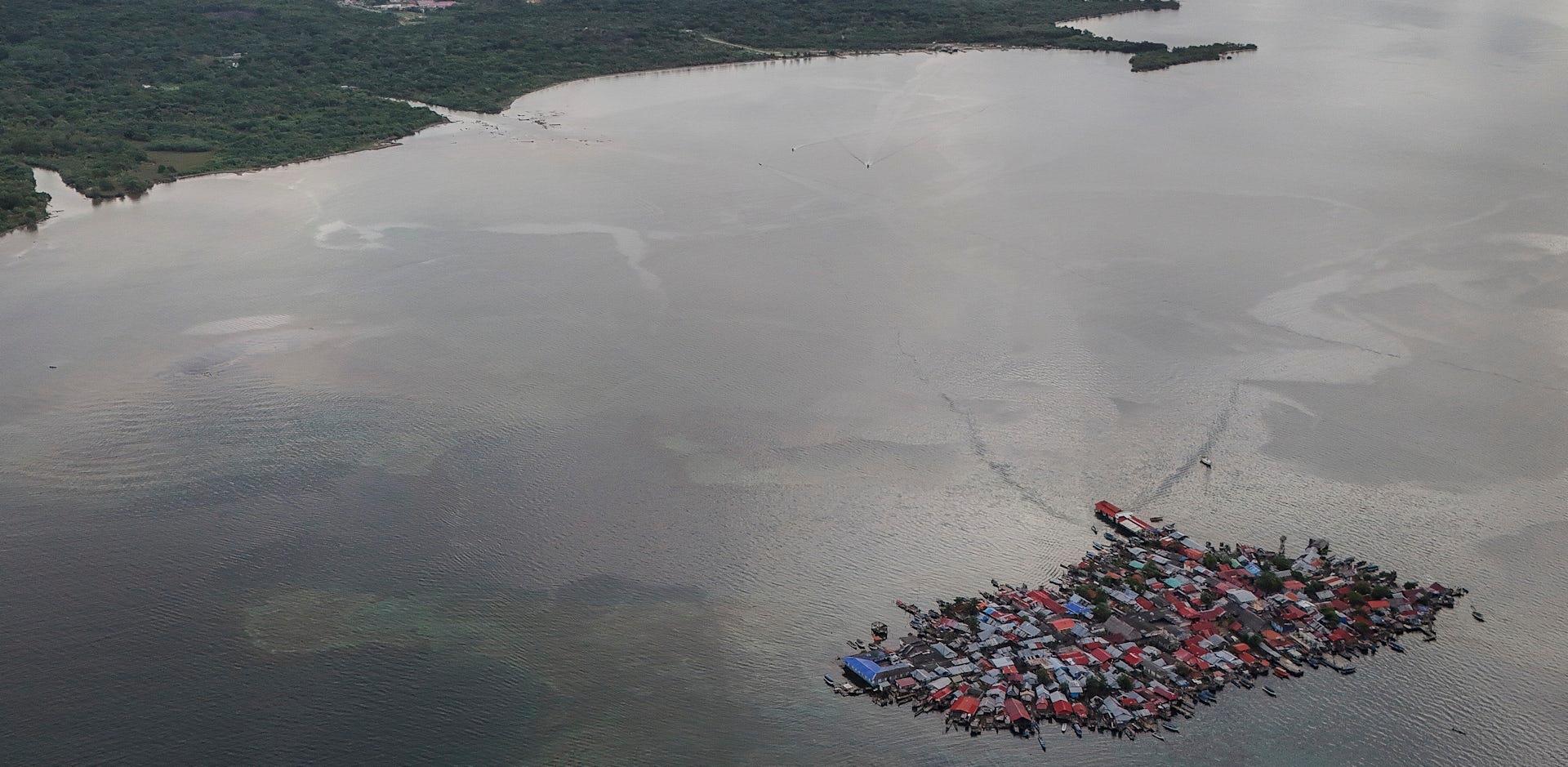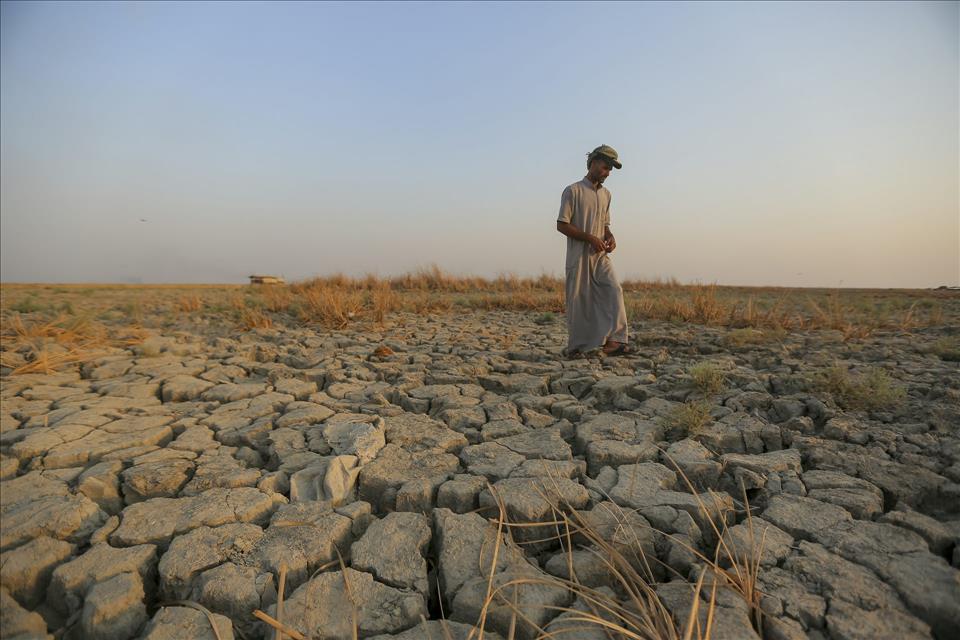
The Disasters We Talk About Shape Our Priorities And Determine Our Preparedness
Today, this mission is more urgent than ever as disasters strike more often and with greater force .
And although substantial progress has been made, there is still much to achieve in reducing disaster risks and their impacts.
One of the main culprits for overlooking certain disasters is the way we talk about them. We tend to focus more on the narratives surrounding rapid-onset events - wildfires, earthquakes, hurricanes - versus long-term crises like climate change.
Punishment from the godsHistorically, people saw disasters as unpredictable forces beyond human control.
Earthquakes, floods and famines were often explained as punishment from the gods . Communities believed these events reflected moral failings or divine judgment, rooted in cultural and religious traditions .
For instance, the Epic of Gilgamesh tells of a great flood sent to cleanse humanity of its sins. Early Islamic traditions interpreted disasters as tests of faith or signs of divine displeasure, with references in the Qur'an. Other major religions such as Buddhism and Hinduism have similar divine-based interpretations .
The Lisbon earthquake of 1755 , however, marked a turning point, prompting a shift towards human-centred explanations of disasters.
Enlightenment thinkers such as Voltaire, Rousseau and Kant challenged purely religious interpretations, advocating rational and scientific reasoning and a better understanding of nature, ushering in a new view of disasters as acts of nature.
Disasters as human-inducedThis intellectual shift marked the beginning of a more secular and scientific understanding of disasters. It suggested that disasters could be studied, anticipated and potentially prevented through human action.
Building on this foundation, the Industrial Revolution in the 19th century introduced new risks associated directly with human activities , such as factory accidents and railway crashes. By statistically analyzing these incidents, experts identified predictable patterns, prompting the creation of specialized institutions to manage and mitigate these emerging hazards.
As the understanding of human influence on disasters evolved further in the early 20th century, scholars began exploring how social behaviours , industrial practices and preparedness levels shaped disaster outcomes.
This expanded perspective underscored the crucial role of societal structures and human decisions, demonstrating that disasters were not just natural events but deeply intertwined with human factors. Although religious interpretations still exist in some communities, the consensus has shifted toward viewing disasters as human-induced.
By the 1960s, research turned to the social, political and economic roots of disasters . Scholars showed that poverty, weak governance, poor infrastructure and inequality made communities far more vulnerable.
As a result, attention shifted from reacting after disasters to tackling their root causes in advance. This regarded disasters as acts of social systems and structures.

Due to rising sea levels, about 300 Guna Indigenous families were relocated from Gardi Sugdub Island off Panama's Caribbean coast to new government-built homes on the mainland. (AP Photo/Matias Delacroix) Politics and equity meet
More recently, vulnerability and resilience have become core concepts in disaster management practice and policy-making.
International frameworks such as the Hyogo Framework (2005–2015) and the Sendai Framework for Disaster Risk Reduction (2015–2030) reflect this shift. These frameworks define disasters as a global issue requiring international collaboration, systematic risk management and proactive strategies.
Today, scholars widely recognize disasters not as purely natural events but as results of human actions, including negligence, poor planning and inadequate governance.
Defining what exactly constitutes a disaster, however, remains contested: Who decides what qualifies as a disaster, and according to which criteria? Which ones are more important and deserve more attention?
This distinction is especially clear in media and political discussions, which tend to highlight rapid-onset events like earthquakes, floods or hurricanes. In contrast, slower, long-term crises related to climate change or environmental degradation often receive far less attention
What media coverage missesOur understanding and management of disasters is biased.
A recent analysis of Canadian media highlights a significant imbalance in the attention given to sudden and slow-onset disasters.
Sudden disasters like wildfires consistently receive far greater media coverage in comparison to slower-developing events like droughts or environmental degradation.
For example, CBC devoted up to eight hours in a single day to covering the immediate aftermath of the 2010 Haiti earthquake. In contrast, the 2011 Horn of Africa drought typically received less than two minutes of daily coverage. Yet the cumulative impacts of these slow-onset crises are substantial, often surpassing the effects of rapid-onset disasters.
According to a report by the United Nations Convention to Combat Desertification , although droughts accounted for only 15 per cent of natural hazard-induced disasters from 1970 to 2019, they exacted the highest human toll, causing approximately 650,000 deaths globally.
During this period, weather-, climate- and water-related hazards comprised half of all disasters and 45 per cent of disaster-related deaths, disproportionately affecting developing countries. Additionally, between 1998 and 2017 alone, droughts led to economic losses roughly US$124 billion .
The World Bank further underscores this critical issue, estimating that climate-related, slow-onset disasters could displace about 216 million people globally by 2050. Such displacement carries extensive humanitarian and geopolitical consequences.
Recent events highlight the serious consequences of slow-onset disasters. Global soil degradation, for example, currently affects nearly 3.2 billion people . Between 2015 and 2019, 100 million hectares of land were lost each year, cutting food production and worsening hunger.
Rising sea levels threaten nearly 900 million people globally in low-lying coastal areas . Flooding, saltwater intrusion and soil salinization are damaging homes, farmland and public health.
Building a better futureAddressing what we pay attention to requires a fundamental shift in approaches to disasters.
This involves critically recognizing human accountability in exacerbating hazards and scrutinizing structural vulnerabilities - poverty, inadequate infrastructure, ineffective governance - which increase disaster impacts.
As a society, we need to re-evaluate our priorities and adopt a holistic perspective that equally acknowledges all disaster forms.
With sustained investment in prevention, stronger infrastructure and greater social equity, communities in Canada and around the world can strengthen their capacity to face the future.

Legal Disclaimer:
MENAFN provides the
information “as is” without warranty of any kind. We do not accept
any responsibility or liability for the accuracy, content, images,
videos, licenses, completeness, legality, or reliability of the information
contained in this article. If you have any complaints or copyright
issues related to this article, kindly contact the provider above.
Most popular stories
Market Research

- Luminadata Unveils GAAP & SOX-Trained AI Agents Achieving 99.8% Reconciliation Accuracy
- Whale.Io Launches Battlepass Season 3, Featuring $77,000 In Crypto Casino Rewards
- Easystaff Data Reveals 6.8× Growth In Payroll Use Of Stablecoins
- Pepeto Presale Exceeds $6.93 Million Staking And Exchange Demo Released
- Simplefx Relaunches First Deposit Bonus
- Alt.Town Introduces $TOWN Token Utility Across Platform Services And Launches Valuefi Deposit Event




















Comments
No comment